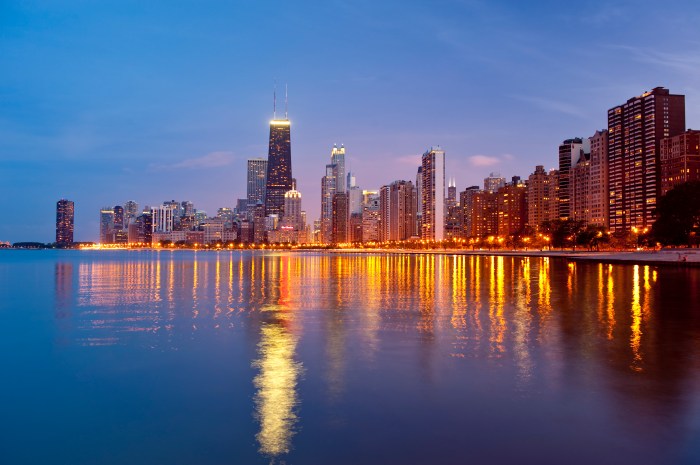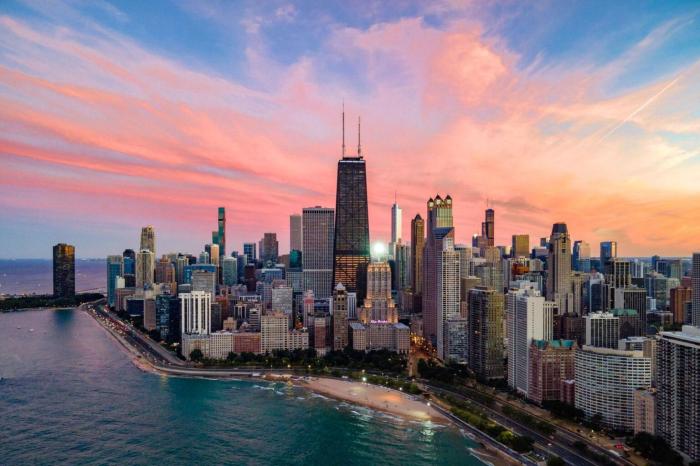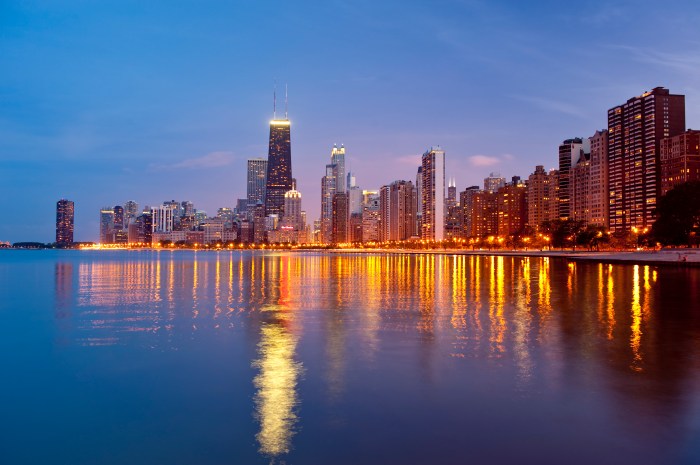Top things to do in Reykjavik: From exploring iconic landmarks to embracing the vibrant culture, Reykjavik offers a captivating blend of history, nature, and modern attractions. This guide dives deep into the city’s must-see destinations, highlighting the best outdoor adventures, culinary experiences, and cultural gems. Get ready to discover the magic of Iceland’s capital!
This comprehensive guide provides detailed insights into Reykjavik’s top attractions, including iconic landmarks, outdoor activities, culinary delights, museums, and shopping opportunities. We’ll also explore transportation options, accommodation choices, and helpful tips for planning your Reykjavik adventure.
Introduction to Reykjavik
Reykjavik, the capital of Iceland, is a city unlike any other. Nestled on the shores of Faxaflói Bay, it boasts a unique blend of vibrant city life and breathtaking natural beauty. From the iconic Hallgrímskirkja church to the dramatic basalt columns of the coastline, Reykjavik offers a captivating experience for every visitor. Its rich history, modern attractions, and warm, welcoming atmosphere make it a truly unforgettable destination.Reykjavik’s historical context is deeply intertwined with Iceland’s settlement and cultural development.
Founded in 874 AD by Ingólfur Arnarson, it evolved from a small fishing village into a bustling metropolis. This rich history, coupled with a strong sense of Icelandic identity, continues to shape the city’s unique character. The city’s cultural significance is reflected in its museums, art galleries, and vibrant social scene.
Modern Attractions and Activities
Reykjavik’s modern attractions cater to a wide range of interests. The city boasts a thriving culinary scene, with numerous restaurants offering a diverse array of Icelandic and international cuisine. From traditional lamb dishes to innovative fusion creations, foodies will find plenty to savor. The city’s nightlife scene is equally vibrant, with bars and clubs offering everything from live music to DJs.Furthermore, Reykjavik is a hub for adventure activities.
Visitors can explore the surrounding landscapes on hiking tours, witness the majestic Northern Lights, or delve into the fascinating world of Icelandic mythology at various historical sites. These experiences offer a glimpse into Iceland’s captivating natural wonders and cultural heritage.
Historical Significance
Reykjavik’s historical significance is undeniable. Founded in 874 AD, it was established as a relatively late settlement in comparison to other Icelandic communities. This makes its development and growth a fascinating study in the evolution of Icelandic culture. The settlement was initially established for its strategic location and access to the surrounding environment, providing resources and a place for expansion.
- Early Settlements: The city’s founding by Ingólfur Arnarson marked a pivotal moment in Icelandic history. His decision to settle in the area established a focal point for the subsequent growth and development of the community.
- Cultural Preservation: Reykjavik’s museums and historical sites showcase the city’s past and its connection to Iceland’s rich cultural heritage. These locations offer a tangible link to the country’s origins and the evolution of its traditions.
Cultural Experiences
Reykjavik’s vibrant culture is evident in its many museums, art galleries, and festivals. Visitors can delve into Iceland’s rich history and artistic expressions. The city’s cultural scene is a dynamic blend of traditional and contemporary influences.
- Museums and Galleries: The National Museum of Iceland provides a comprehensive overview of the country’s history, showcasing artifacts and exhibits that highlight the cultural evolution of Iceland.
- Art Scene: Reykjavik’s art galleries and studios offer a glimpse into the artistic expressions of Icelandic artists. The city’s creative scene fosters innovation and creativity.
- Festivals and Events: Reykjavik hosts various festivals throughout the year, celebrating everything from music to literature. These events showcase the city’s cultural dynamism and its unique appeal to tourists.
Enticing Visitors
Embark on a journey to explore Reykjavik’s captivating blend of history, culture, and natural beauty. Experience the city’s unique charm and immerse yourself in its vibrant atmosphere. From the bustling streets to the serene landscapes, Reykjavik promises an unforgettable adventure.
Top Attractions & Activities
Reykjavik, Iceland’s vibrant capital, boasts a captivating blend of natural wonders and cultural experiences. From the mesmerizing Northern Lights to the historical stories etched in its architecture, the city offers a unique journey into Icelandic heritage and breathtaking landscapes. This section highlights five prominent attractions, exploring their individual appeal and the historical and cultural context that makes them essential stops on any visitor’s itinerary.Exploring Reykjavik’s top attractions reveals a rich tapestry of Icelandic history and culture, woven into the city’s modern identity.
Each location provides a distinct perspective, whether it’s the grandeur of a historical site, the spectacle of a natural wonder, or the artistic expression of a contemporary gallery.
Popular Attractions
Reykjavik’s popularity stems from its diverse offerings, catering to a broad spectrum of interests. From the awe-inspiring beauty of nature to the fascinating insights into Icelandic culture and history, the city’s attractions cater to all visitors. The following five attractions stand out as popular choices for a memorable experience.
| Attraction | Description | Duration (approx.) |
|---|---|---|
| Hallgrímskirkja Church | A prominent landmark, this impressive Lutheran church offers panoramic city views from its lofty tower. Its unique architectural style is a testament to Icelandic craftsmanship. | 1-2 hours |
| Harpa Concert Hall | A striking architectural marvel, this concert hall is a popular destination, known for its distinctive design and impressive acoustics. Visitors can explore the building’s interior and enjoy the views. | 1-3 hours |
| Perlan | Perlan offers stunning views of the city and surrounding landscape. It features interactive exhibits, restaurants, and a unique collection of historical artifacts. | 2-4 hours |
| National Museum of Iceland | A comprehensive museum, showcasing Icelandic history, culture, and natural heritage. It’s a significant destination for learning about the island’s past. | 2-3 hours |
| Reykjavik City Hall | This historic building embodies Reykjavik’s rich history and serves as the seat of municipal government. It’s a beautiful example of Icelandic architecture. | 1-2 hours |
These attractions offer varying experiences, each with its unique allure. The architectural marvels, such as Hallgrímskirkja and Harpa, stand as testaments to Icelandic design and innovation. Perlan, with its panoramic views, provides a different perspective, highlighting the city’s connection to its surroundings. The National Museum offers a journey through time, immersing visitors in Iceland’s rich history and cultural heritage.
The City Hall, with its historical significance, serves as a portal to Reykjavik’s governmental heart. Planning your visit based on your interests and available time is crucial to maximizing your experience.
Outdoor Adventures
Reykjavik and its surrounding areas offer a wealth of outdoor adventures for all levels of experience. From hiking and exploring volcanic landscapes to kayaking and whale watching, there’s something for everyone. Embrace the raw beauty of Iceland’s nature and experience the thrill of the great outdoors.Iceland’s diverse landscapes, from volcanic peaks to black sand beaches, create a perfect backdrop for a wide range of outdoor activities.
The weather can be unpredictable, but preparation and the right gear are crucial for a safe and enjoyable experience. Knowing when to go and what to expect are important factors to consider when planning your outdoor adventures.
Outdoor Activities in and around Reykjavik
Numerous outdoor activities are available, catering to varying interests and fitness levels. Here’s a sampling of what awaits you:
- Hiking: Iceland boasts a multitude of hiking trails, ranging from easy strolls to challenging climbs. Many trails offer breathtaking views of glaciers, waterfalls, and volcanic landscapes. Consider the Laugavegur Trail for a longer, more strenuous hike.
- Whale Watching Tours: Reykjavik is an excellent base for whale watching expeditions. These tours often depart from the city and offer the opportunity to spot various whale species, including humpback whales, minke whales, and orcas. Book a tour in advance, especially during peak season.
- Northern Lights Viewing: Iceland is renowned for its clear night skies, perfect for viewing the aurora borealis. Plan your trip for the winter months (September to April) to increase your chances of seeing the mesmerizing lights dance across the sky.
- Kayaking/Canoeing: Explore the coastline or inland fjords by kayak or canoe. This offers a unique perspective of the Icelandic landscape and its wildlife.
- Snorkeling/Diving: Explore the underwater world of Iceland’s coastline and encounter diverse marine life. Check for dive sites and appropriate equipment rentals.
Best Time of Year for Specific Activities
The best time to experience a particular activity depends on the weather conditions and the specific activity.
- Hiking: Summer (June-August) offers the best weather for hiking, with longer daylight hours and generally stable conditions. Winter (December-February) can be challenging due to potential snow and ice, but offers a different, unique experience.
- Whale Watching: Whale watching tours are popular year-round, but the best time to see whales is generally during the summer months when they are more active. However, the winter months (December-February) also offer opportunities to see whales in their natural habitat, with different species migrating during this time.
- Northern Lights: The best time to see the Northern Lights is during the winter months, when the nights are long and dark. September to April offers the highest chances of clear skies and visibility.
- Kayaking/Canoeing: Summer (June-August) is generally the most favorable time for kayaking and canoeing due to warmer water temperatures and better weather conditions. However, experienced kayakers may find winter (December-February) to be less challenging and offer unique opportunities.
Necessary Precautions and Gear
Outdoor activities in Iceland require careful preparation. Be aware of the weather conditions and pack appropriate clothing and gear.
- Weather: Iceland’s weather can be unpredictable. Be prepared for sudden changes in temperature and precipitation. Layering is crucial.
- Gear: Pack waterproof and windproof clothing, sturdy hiking boots, and appropriate outerwear for the conditions. Bring a backpack to carry essentials.
- Safety: Let someone know your hiking plans and expected return time. Check weather forecasts before heading out. Be aware of potential hazards such as uneven terrain or icy conditions.
Guided Tours for Outdoor Activities
Guided tours can significantly enhance your outdoor experience. They provide valuable insights into the local flora, fauna, and history.
- Guided Tours: Guided tours often include experienced guides who provide valuable information about the region and safety precautions. They can also assist with navigating challenging terrains and providing a deeper understanding of the natural environment.
Outdoor Activities Table
| Activity | Description | Difficulty | Season |
|---|---|---|---|
| Hiking | Exploring Icelandic trails, ranging from easy walks to challenging climbs. | Beginner to Advanced | Spring/Summer (May-September) |
| Whale Watching | Seeing whales in their natural habitat. | Easy | Spring/Summer (May-September) |
| Northern Lights Viewing | Witnessing the aurora borealis. | Easy | Winter (September-April) |
| Kayaking | Exploring the coastline or fjords by kayak. | Beginner to Advanced | Summer (June-August) |
Culinary Delights

Reykjavik’s culinary scene is vibrant and evolving, offering a unique blend of traditional Icelandic flavors and international influences. From cozy cafes serving exquisite pastries to upscale restaurants showcasing innovative dishes, there’s something to satisfy every palate. The city’s focus on fresh, local ingredients, coupled with a burgeoning interest in gastronomy, creates a truly unforgettable dining experience.The city’s restaurants showcase a diverse range of cuisines, from modern interpretations of Icelandic classics to international favorites.
The emphasis on sustainability and locally sourced ingredients is evident in many establishments, making dining in Reykjavik a way to experience the island’s natural bounty.
Traditional Icelandic Cuisine
Icelandic cuisine is deeply rooted in its history and the country’s unique environment. Dishes often feature hearty ingredients like lamb, fish, and root vegetables. Traditional methods of preparation, such as smoking and drying, are still practiced, lending distinct flavors to the food. The focus on utilizing fresh, seasonal ingredients ensures a taste of the land.
Local Ingredients, Top things to do in reykjavik
Iceland boasts a rich tapestry of local ingredients, contributing significantly to the culinary landscape. From the fresh catches of the surrounding waters to the hearty lamb from Icelandic farms, the quality and freshness of these ingredients are exceptional. Icelandic seafood, especially cod, haddock, and salmon, is renowned for its flavor and texture. Other local produce, such as root vegetables and berries, contribute a unique depth of flavor to the cuisine.
Reykjavik’s got tons of amazing things to see, from the Blue Lagoon to the Hallgrímskirkja church. But if you’re looking for a way to experience nature’s grandeur without leaving your home, you could always try virtually hiking the Appalachian Trail. virtually hike the appalachian trail offers a fantastic alternative way to get your dose of adventure.
After all, that’s still a great way to soak up some incredible landscapes and even discover new places while you’re in Reykjavik!
Recommended Food Experiences
- Sample a traditional Icelandic “hangikjöt” (smoked lamb). The unique smoky flavor and tender texture are a must-try.
- Indulge in a seafood platter featuring locally caught fish. The freshness and quality of Icelandic seafood are unmatched.
- Experience a farm-to-table meal, where ingredients are sourced directly from Icelandic farms. This is a great way to support local producers.
- Try a variety of Icelandic cheeses and enjoy them with local bread. The distinct flavors of Icelandic cheeses will tantalize your taste buds.
Restaurant Recommendations
| Restaurant | Cuisine | Atmosphere | Price Range |
|---|---|---|---|
| Bæjarins Beztu Pylsur | Fast Food/Hot Dogs | Casual, Outdoor | Low |
| Grillmarkaðurinn | Seafood/Grill | Casual, Lively | Medium |
| Íslenski Kaffi | Traditional Icelandic | Cozy, Rustic | Medium |
| Árbæjarsafn | Modern Icelandic | Upscale, Elegant | High |
| Restaurant Dill | Modern European | Upscale, Stylish | High |
Museums & Cultural Experiences
Reykjavik offers a captivating blend of history, art, and culture, enriching the visitor’s experience beyond the city’s stunning landscapes. These museums and cultural attractions provide a deeper understanding of Icelandic heritage and traditions, showcasing the nation’s rich past and present.Exploring these cultural gems provides a unique perspective on the country’s development, showcasing the resilience and creativity of its people.
Top Museums in Reykjavik
Iceland’s museums offer a fascinating glimpse into the country’s diverse history and culture. From ancient sagas to contemporary art, the museums in Reykjavik provide a comprehensive understanding of Icelandic society.
- National Museum of Iceland: This museum presents a comprehensive overview of Icelandic history, from the Viking Age to the modern era. It houses a vast collection of artifacts, including archaeological finds, historical documents, and ethnographic displays. The museum’s exhibits detail the evolution of Icelandic society, its unique cultural traditions, and the country’s enduring spirit. The collections showcase the significant role of Iceland’s sagas in shaping its identity and the challenges and triumphs of Icelandic settlers.
- Perlan: This iconic structure offers panoramic views of Reykjavik and beyond. Beyond the breathtaking views, Perlan features an impressive museum of Icelandic history, including the country’s geological past and the evolution of its inhabitants. The museum exhibits are well-organized and engaging, making the history easily accessible to visitors.
- National Gallery of Iceland: The National Gallery showcases a diverse collection of Icelandic and international art, from the country’s early artistic expressions to contemporary works. The gallery features a significant collection of Icelandic paintings, sculptures, and photography. It provides insights into the nation’s artistic development and the influence of international art movements on Icelandic artists.
- Harpa Concert Hall: While primarily a concert hall, Harpa offers a unique cultural experience. The architectural design itself is a captivating sight, and the hall frequently hosts exhibitions and displays that complement its musical performances.
Cultural Attractions
Beyond the museums, Reykjavik boasts several cultural attractions that offer deeper insights into Icelandic society.
- Hallgrímskirkja Church: This iconic church offers a stunning architectural design and breathtaking views from its observation tower. Beyond its impressive architecture, the church embodies the spirit of Icelandic resilience and faith.
- The Settlement Exhibition at the National Museum of Iceland: This exhibition is a significant part of the National Museum and showcases the settlement of Iceland, covering aspects of Viking exploration and the challenges of early Icelandic life. The exhibition highlights the ingenuity and adaptability of early settlers, and the factors that led to the establishment of a unique society.
Cultural Heritage of Iceland
Iceland’s cultural heritage is deeply rooted in its unique history and geography. The country’s isolated location has shaped its cultural identity, fostering a distinct sense of community and a deep respect for nature.
“Icelandic culture is a testament to the enduring power of human ingenuity and resilience in the face of challenging environments.”
Reykjavik offers stunning sights, from the Blue Lagoon to Hallgrímskirkja church. Planning a trip on a budget can be tricky, but luckily, there are fantastic ways to explore the city affordably. For some inspiration on how to experience Detroit on a shoestring budget, check out this helpful resource: detroit on a budget. Once you’ve got the budget-travel tips down, you can easily apply them to your Reykjavik adventure, maximizing your time and savings while experiencing the city’s vibrant culture.
The country’s history is intertwined with the sagas, oral traditions, and stories that have been passed down through generations. These stories reflect the country’s struggles, triumphs, and unique cultural identity. Iceland’s rich cultural heritage is also reflected in its traditions, language, and artistic expressions.
Museum Details
| Museum | Theme | Opening Hours |
|---|---|---|
| National Museum of Iceland | Icelandic History | (Check website for specifics) |
| Perlan | Icelandic History & Geology | (Check website for specifics) |
| National Gallery of Iceland | Icelandic & International Art | (Check website for specifics) |
| Hallgrímskirkja Church | Architecture & History | (Check website for specifics) |
Shopping & Souvenirs
Reykjavik offers a vibrant array of shopping experiences, from bustling markets to charming boutiques, perfect for finding unique souvenirs and local treasures. Beyond the typical tourist trinkets, you’ll discover handcrafted items reflecting Iceland’s rich artistic heritage and natural beauty. This exploration into Reykjavik’s retail scene will help you find the perfect memento of your trip.Finding authentic Icelandic souvenirs goes beyond just picking up a t-shirt.
It’s about supporting local artists and craftspeople, ensuring your purchase contributes to the local economy and reflects the unique culture of Iceland. You’ll discover a world of artistry and craftsmanship that’s both beautiful and meaningful.
Best Shops & Markets for Souvenirs
Reykjavik’s shopping scene caters to diverse tastes. From traditional crafts to modern designs, you’ll find something to capture your attention. The city’s markets and shops provide ample opportunities to discover unique items and support local businesses.
- Laugavegur Street is a pedestrianized street lined with shops, cafes, and restaurants. It’s a great place to browse for a variety of souvenirs, including jewelry, clothing, and artwork. Expect to find both high-street brands and smaller independent stores.
- The Reykjavik City Centre has a multitude of independent shops, each with its own unique offerings. You’ll discover local crafts, jewellery, and clothing reflecting the city’s artistic flair. Many shops offer curated selections of Icelandic products.
- Harpa Concert Hall often features artisan booths and pop-up shops, offering unique items during special events. It provides a vibrant atmosphere and opportunities to discover one-of-a-kind pieces.
Unique Items Available
Iceland’s unique environment and culture inspire a wide range of handcrafted souvenirs.
- Jewelry: Icelandic jewelry often incorporates natural materials like lava stones, Icelandic wool, and silver. Designs frequently feature intricate patterns and symbolic representations of the island’s landscape and mythology. Look for pieces that feature geothermal patterns or unique lava formations.
- Wool Products: Icelandic wool is renowned for its warmth and durability. You can find a wide variety of wool sweaters, scarves, blankets, and even home decor items. These products represent the country’s traditional craftsmanship and are a popular choice for souvenirs.
- Art & Photography: Many galleries and studios showcase local artists’ works, including paintings, sculptures, and photography capturing the island’s breathtaking scenery. You’ll discover unique perspectives and artistic interpretations of Iceland’s landscapes and culture.
Options for Souvenir Shopping
Beyond individual shops, Reykjavik offers diverse options for souvenir shopping.
- Markets: The Reykjavik City Centre markets offer a great opportunity to sample local products, meet artisans, and buy souvenirs. Look for the local farmer’s market, where you can purchase fresh produce, cheese, and other Icelandic specialties. Many offer a wide selection of locally-sourced food items that can be enjoyed immediately or taken home as souvenirs.
- Local Crafts & Artists: Supporting local artists and craftspeople is essential. Their unique pieces often reflect Icelandic culture and artistry. Look for shops that showcase the works of individual artisans or collectives. These artisans often have workshops or studios where you can observe the creation process, further enriching your experience.
Local Crafts & Artists
Reykjavik fosters a vibrant arts and crafts scene. Numerous artisans create unique items reflecting Iceland’s history, culture, and natural beauty. These skilled individuals are often showcased in shops and markets, allowing you to support their work and purchase unique, handcrafted souvenirs.
Exploring Reykjavik’s highlights is a must! From soaking in the Blue Lagoon to marveling at the Hallgrímskirkja church, there’s plenty to see. However, if you’re looking for a truly immersive experience, checking out some trip ideas best hiking in the surrounding areas is a great way to connect with Iceland’s stunning natural beauty. Ultimately, Reykjavik offers a blend of urban excitement and breathtaking outdoor adventures, making it a fantastic destination for any traveler.
| Shop Type | Location | Unique Items |
|---|---|---|
| Independent Boutiques | Laugavegur Street, City Centre | Hand-knitted sweaters, hand-painted pottery, unique jewelry, locally-sourced food |
| Craft Markets | City Centre, Harpa | Artisan-made jewelry, woolen goods, unique art pieces, local food products |
| Online Retailers | Various | Digital prints, art prints, hand-crafted items, Icelandic wool products |
Accommodation Options
Finding the perfect place to stay in Reykjavik is crucial for a memorable trip. The city offers a diverse range of accommodation options, catering to various budgets and preferences. From cozy guesthouses to luxurious hotels, you’re sure to find something that suits your needs. Understanding the different options and their pros and cons will help you make the best choice for your Iceland adventure.
Budget-Friendly Options
Budget-friendly accommodations in Reykjavik provide a great balance between affordability and basic necessities. These options often include shared bathrooms and basic amenities, but they represent a cost-effective way to experience the city. Their proximity to attractions is also a significant advantage.
- Hostels: Hostels are a popular choice for budget travelers. They offer dormitories with shared rooms and private rooms, providing a social environment and a chance to meet fellow travelers. Pros include affordability and the opportunity to connect with others. Cons include potential noise and the need to share facilities. Locations vary, with some situated in central areas, facilitating easy access to tourist hotspots.
- Guesthouses: Guesthouses provide a more private and homely environment compared to hostels. They often feature private rooms and sometimes shared bathrooms. Pros include a more comfortable stay than hostels, while cons might include fewer amenities. Locations tend to be in residential areas, though some might be situated near the city center.
Mid-Range Accommodations
Mid-range hotels offer a good mix of comfort and amenities at a reasonable price. These establishments often provide comfortable rooms, decent facilities, and a convenient location.
- Boutique Hotels: Boutique hotels are known for their unique style and character. They often offer personalized service and a stylish atmosphere, sometimes in renovated historic buildings. Pros include a personalized experience, a unique environment, and sometimes a convenient location. Cons might include a higher price compared to guesthouses and a smaller selection of rooms.
- Hotels with Basic Amenities: Many hotels offer a range of amenities and comfort levels, accommodating diverse preferences. Pros include varying levels of comfort and convenience, while cons may involve limited personalized services. Locations vary greatly, with some hotels situated in central locations and others in slightly more remote areas.
Luxury Stays
Luxury hotels in Reykjavik offer an unparalleled experience with exceptional amenities and top-notch service. These establishments often feature premium rooms, fine dining options, and luxurious facilities.
- High-End Hotels: High-end hotels offer a lavish experience, featuring exceptional service, gourmet dining, and luxurious accommodations. Pros include an unparalleled level of comfort and personalized service. Cons might include a significantly higher price tag compared to other options.
Accommodation Location Considerations
The location of your accommodation plays a crucial role in your experience. Hotels and guesthouses near the city center offer easy access to attractions, restaurants, and shops. More remote locations might offer a quieter experience but require more travel time to reach key destinations.
Booking Accommodations
Booking accommodations in advance, especially during peak season, is highly recommended. Websites like Booking.com, Expedia, and Airbnb provide numerous options and comparison tools, allowing you to search for accommodations based on your needs and preferences. Remember to carefully read reviews and compare prices before making a final decision.
Accommodation Comparison Table
| Accommodation | Price Range | Amenities | Location |
|---|---|---|---|
| Hostel | Budget-friendly | Shared rooms, basic facilities | Often in city center or near attractions |
| Boutique Hotel | Mid-range | Unique style, personalized service, potentially historic building | City center or convenient locations |
| High-End Hotel | Luxury | Exceptional service, fine dining, premium rooms | Often in central areas |
Getting Around Reykjavik
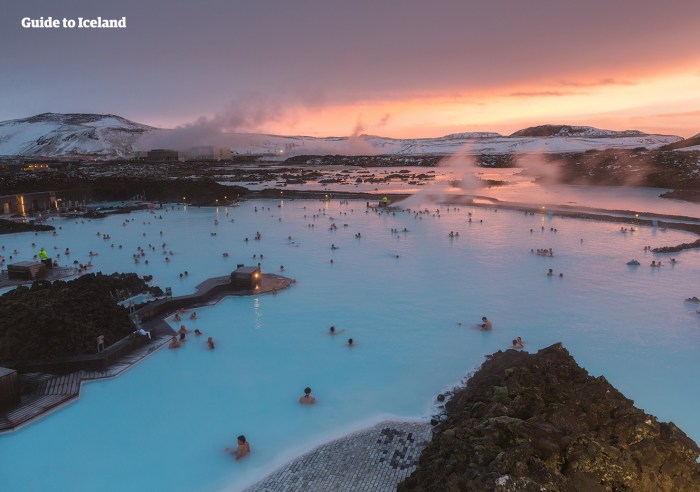
Reykjavik, a city brimming with vibrant culture and stunning landscapes, offers a variety of transportation options to suit every traveler’s needs and budget. Navigating the city is surprisingly easy, whether you prefer the convenience of public transport, the flexibility of ride-sharing, or the freedom of exploring on foot. Understanding the pros and cons of each method will help you plan your journey effectively.Exploring Reykjavik efficiently hinges on choosing the right mode of transport.
This section details the different methods available, outlining their strengths and weaknesses, and providing insights into the public transport system and ride-sharing services. It also includes a helpful table comparing various options, considering cost and time factors.
Public Transportation
Reykjavik boasts a comprehensive public transportation system, making it easy to reach most parts of the city and its surrounding areas. The system comprises buses and occasional trams, providing regular routes and schedules.
Buses operate throughout the city, connecting key landmarks, hotels, and residential areas. Specific routes and schedules are available online on the Reykjavik City Council website, ensuring travelers can plan their journeys effectively. Real-time bus tracking is also available on the app, or online, allowing passengers to know the estimated arrival time of their bus. The frequency of buses varies by route, with some running more frequently during peak hours and less frequently during off-peak periods.
A single ride ticket costs a set amount, and multi-day passes are available for more cost-effective travel.
Ride-Sharing Services
Ride-sharing services are readily available in Reykjavik, offering an alternative to public transportation. These services provide door-to-door convenience, especially for those traveling to destinations not served by public transport. Booking a ride is simple and straightforward via smartphone apps. Users input their pick-up and drop-off locations, and the app displays available drivers and estimated ride times. Prices for rides are generally calculated based on distance and time.
Factors such as traffic conditions and demand can influence the price.
Comparing Transportation Options
| Transportation | Cost | Time | Pros | Cons |
|---|---|---|---|---|
| Walking | Free | Variable | Excellent for exploring the city center, good exercise. | Can be slow, not suitable for long distances or extensive travel. |
| Public Bus | ~€2-€4 per ride (single), ~€10-€20 per day pass | Variable, often longer than driving | Affordable, comprehensive network, environmentally friendly. | Schedules may not always be convenient, may involve transfers. |
| Ride-Sharing (e.g., Uber, Bolt) | ~€5-€15 per ride | Variable, often faster than public transport | Convenient door-to-door service, flexible schedule. | Can be more expensive than public transport, traffic can affect travel time. |
Illustrative Imagery
Reykjavik, a city brimming with vibrant life, offers a unique tapestry of experiences. Stepping into its streets, one can feel the pulse of a city that seamlessly blends modern progress with a deep-rooted Icelandic heritage. The city’s architecture, from its iconic churches to its charming homes, reflects this fusion. From bustling marketplaces to serene harbors, each scene paints a picture of Icelandic life.Exploring Reykjavik’s visual elements is essential to truly understanding its character.
The city’s energy and the charm of its people are best conveyed through vivid imagery. These descriptions aim to transport the reader to the heart of Reykjavik, offering a glimpse into the city’s diverse attractions and unique atmosphere.
A Bustling Reykjavik Street
Imagine a crisp autumn morning in Reykjavik. The cobblestone streets are alive with activity. Pedestrians in warm woolens and stylish jackets navigate the narrow pathways, their conversations mingling with the cheerful chatter of shopkeepers. Brightly colored storefronts showcase local crafts, from intricately carved wooden toys to hand-knitted sweaters. Steam rises from the steaming windows of cafes, enticing passersby with the aroma of freshly baked pastries and strong coffee.
The rhythmic clang of a nearby bus or the distant call of a seagull completes the vibrant tapestry of the city’s everyday life.
Reykjavik’s Scenic Harbor
Reykjavik’s harbor is a captivating spectacle, a picturesque blend of nature and architecture. The water, often a deep sapphire or a stormy gray, laps against the docks, dotted with fishing boats and colorful tourist vessels. The harbor’s edge is lined with traditional wooden houses, their weathered facades painted in soft pastels. Modern apartment buildings and sleek glass structures rise above, creating a harmonious contrast with the historic architecture.
In the background, the majestic peaks of the Esja mountains offer a dramatic backdrop, adding depth to the scene.
A Traditional Icelandic Home
A traditional Icelandic home is often a testament to the country’s close connection to nature. The architecture usually features a sturdy wooden frame, often clad in dark-toned wood, reflecting the use of local materials. Large windows, strategically placed to maximize natural light, offer stunning views of the surrounding landscape. The interiors often embrace a cozy ambiance, with warm, natural materials like wool and wood.
Woven rugs, hand-knitted blankets, and antique furniture create a sense of history and comfort. The home’s interior will likely feature a large, central living space, perfect for family gatherings and socializing.
A Vibrant Local Market Scene
A vibrant local market scene in Reykjavik is a feast for the senses. The air is filled with the enticing aroma of freshly baked bread, smoked fish, and local cheeses. Stalls overflow with colorful produce, artisanal crafts, and local delicacies. Handmade jewelry, knitted garments, and intricate carvings from local artisans are displayed alongside fresh seafood and local cheeses.
The energy of the market is palpable, with lively conversations, bartering, and the joyful sounds of a bustling community. The overall atmosphere is one of celebration, community, and connection to the Icelandic land.
Hallgrímskirkja Church
Hallgrímskirkja, a prominent landmark in Reykjavik, stands tall as a symbol of the city’s architectural prowess. Its striking, modern design features a soaring tower that offers panoramic views of the city. The church’s interior, characterized by a vast open space, is bathed in natural light. Large windows allow for views of the surrounding landscape, further enhancing the spiritual atmosphere.
The building’s grandeur and modern aesthetic contribute significantly to Reykjavik’s unique character.
Final Wrap-Up: Top Things To Do In Reykjavik
In conclusion, Reykjavik boasts a wealth of experiences for every type of traveler. Whether you’re seeking historical insights, outdoor thrills, culinary adventures, or cultural immersion, Reykjavik has something to offer. This guide has provided a framework to help you plan your unforgettable trip. Pack your bags, and get ready to explore the captivating beauty of Reykjavik!
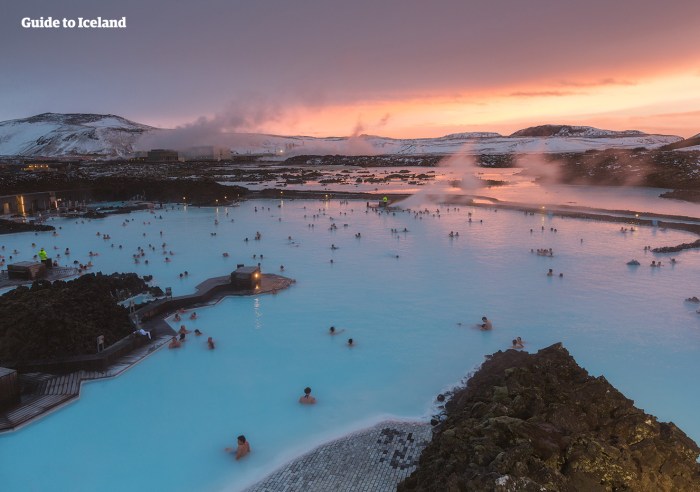

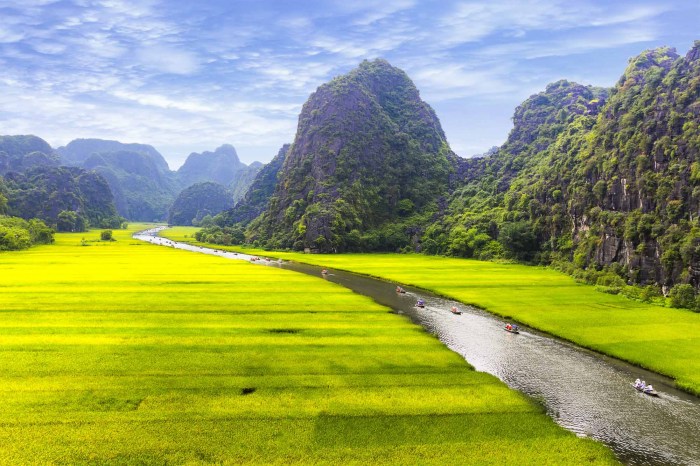
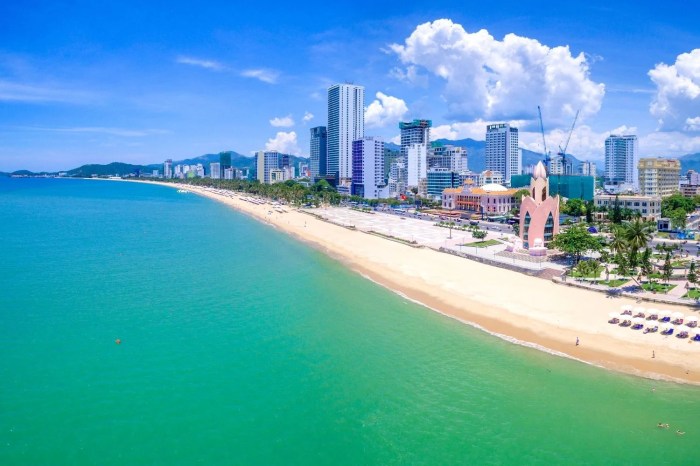












 Note: This is a placeholder for an infographic. A real infographic would be visually engaging, incorporating maps, icons, and color-coding to effectively communicate the information.
Note: This is a placeholder for an infographic. A real infographic would be visually engaging, incorporating maps, icons, and color-coding to effectively communicate the information.








